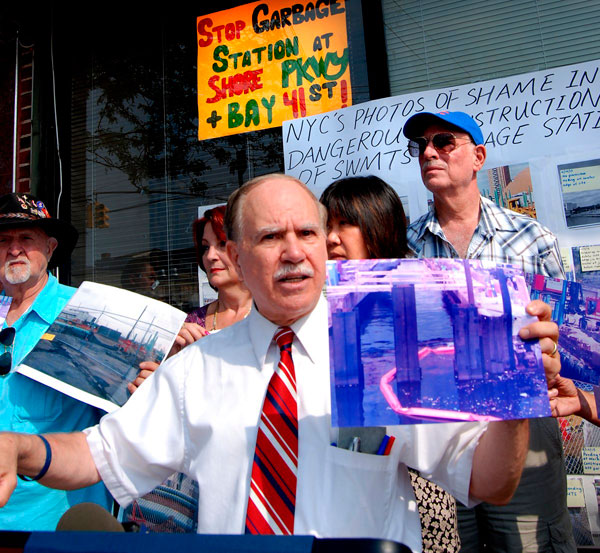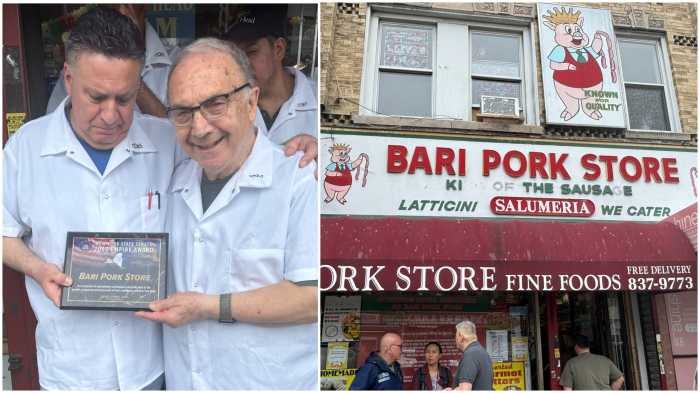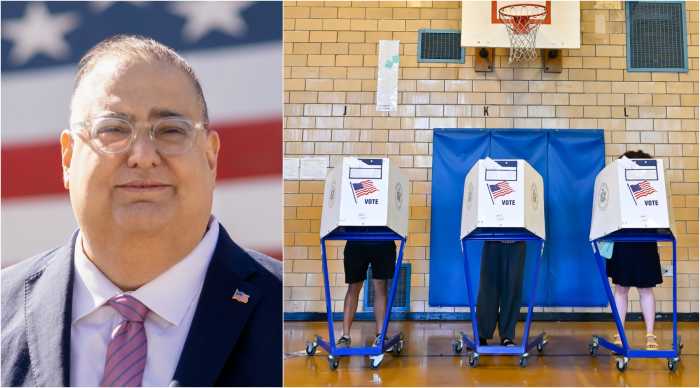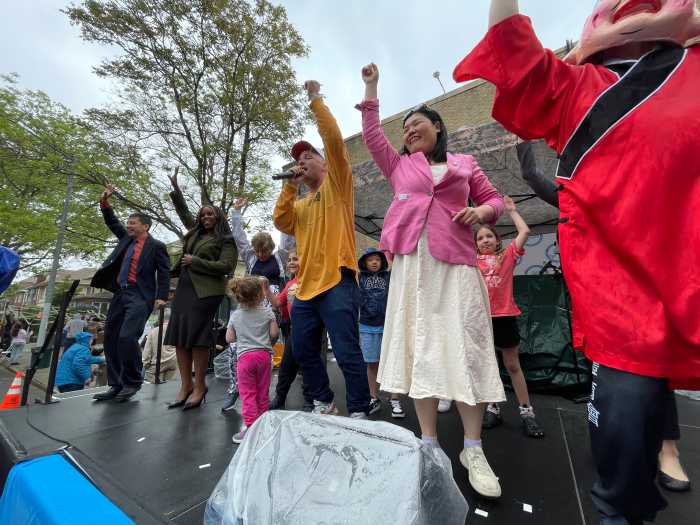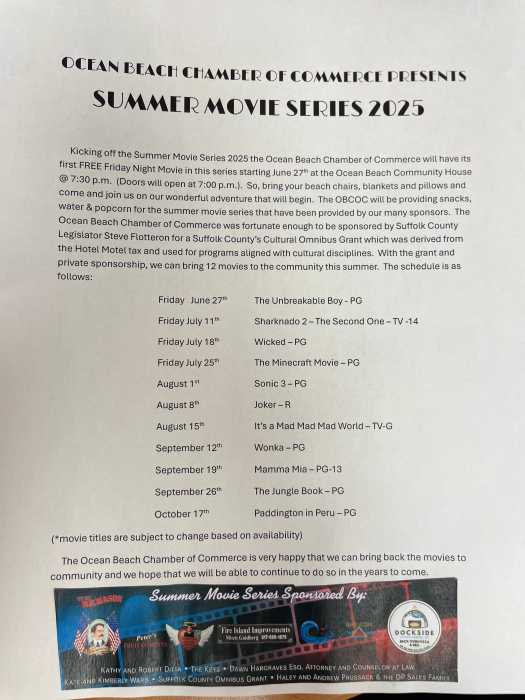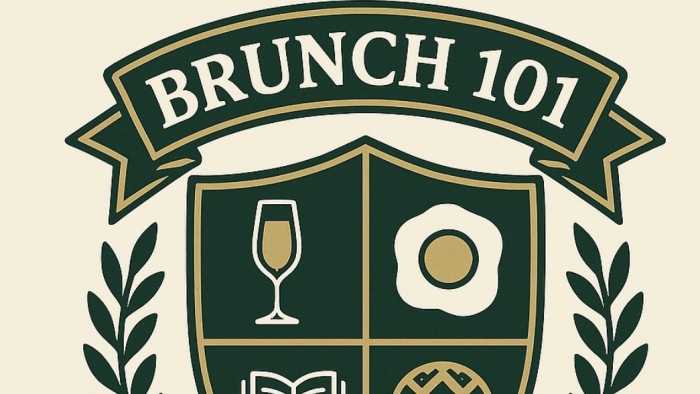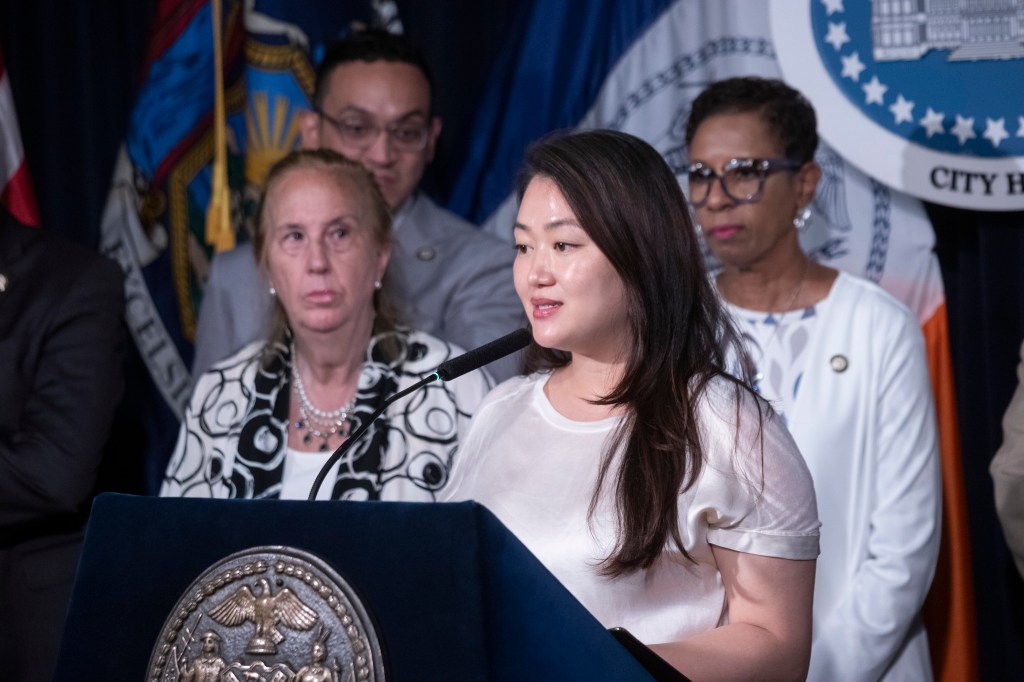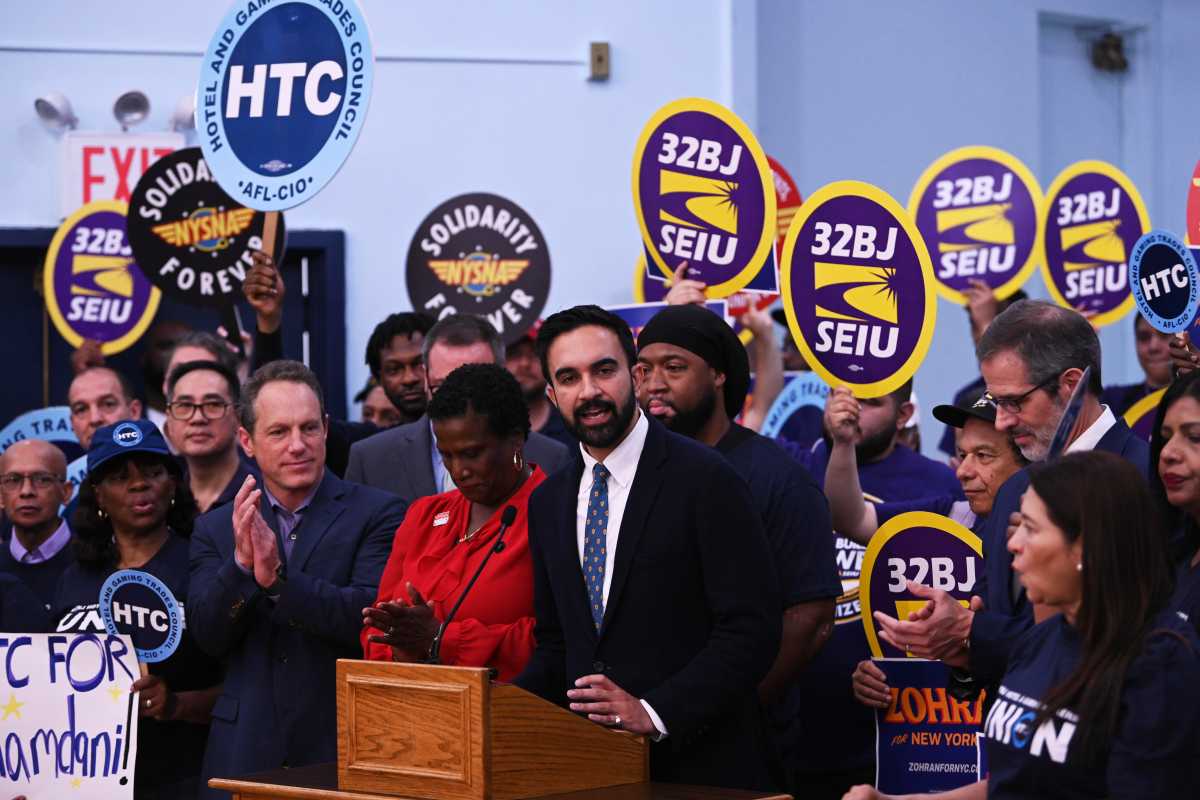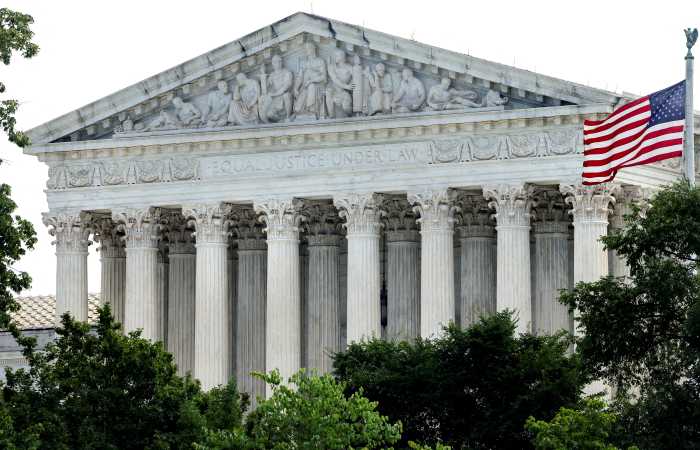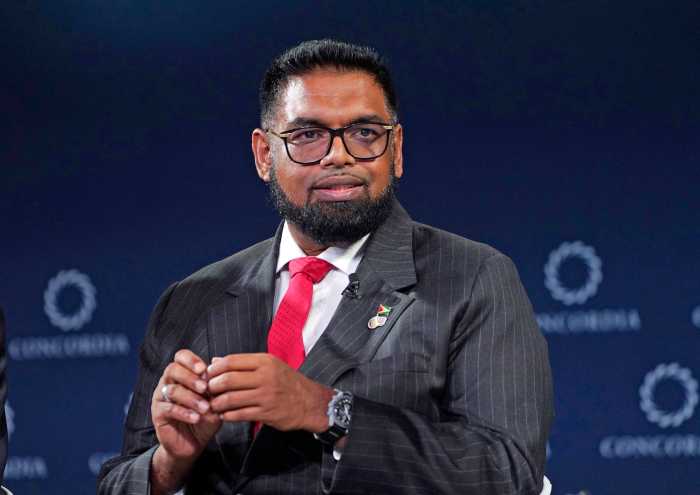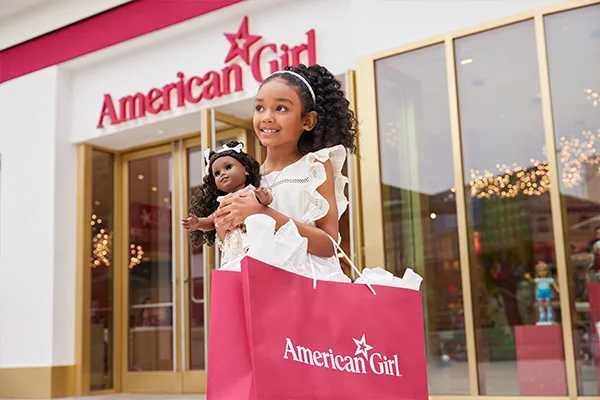Construction work on a waste station on the shore of Gravesend Bay is polluting water, spreading contaminated soil and debris into the air, and harming marine life, according to elected officials and concerned locals.
Assemblyman Bill Colton (D–Bensonhurst) and Councilman Mark Treyger (D–Coney Island) gathered with Bensonhurst residents outside Colton’s Kings Highway district office on Sept. 1 to display photos showing oily substances in the water and poorly contained debris at the site of the Southwest Brooklyn Marine Waste Transfer Station.
Colton called it a David-versus-Goliath story that pits the people of Southern Brooklyn against Mayor DeBlasio and the construction company contracted to build the station.
“This environmental injustice is being brought upon the people of this community by the city administration,” said Colton. “This doesn’t just stay in the waters at the site of the station. This spreads to Coney Island, Seagate, Brighton Beach, and all of Southern Brooklyn.”
The new transfer station is being built on the site of an illegally operated Sanitation Department incinerator that Colton helped get shut down in 1991. The elected officials said that independent studies of the site in 2012 confirmed high levels of dangerous toxins — including mercury and dioxins — and needs a clean up, not construction work.
“Why are we spending hundreds of millions of taxpayer dollars building antiquated garbage stations in residential neighborhoods?” asked Treyger. “This is a site needing federal, state, and city resources to conduct environmental remediation like Gowanus Canal or Fresh Kills in Staten Island.”
Colton has fought the transfer station for years after initially supporting it and penned a bipartisan letter about the project to the Environmental Protection Agency along with Rep. Daniel Donovan (R–Bay Ridge), citing a World War II-era incident when a Navy barge carrying live bombs overturned near the Rockaways. Many were never recovered, and one professional diver claimed in 2010 that there were more than 1,500 still at the bottom of Gravesend Bay. Colton expressed concern that dredging could trigger an explosion.
Gravesend Bay is also a federally designated Essential Fish Habitat, and one local environmental activist said that species of fish that locals often catch for consumption are found in the area where dredging is taking place, including flounder, bluefish, striped bass, and blue claw crab.
“You can go all along the shores of Gravesend Bay and Coney Island and you’ll see people catching fish and crabs to feed their family,” said Ida Sanoff. “The more fish that they eat that contain contaminants, the more chance their families will be exposed. This is not just a narrow local problem. It has much broader implications.”


